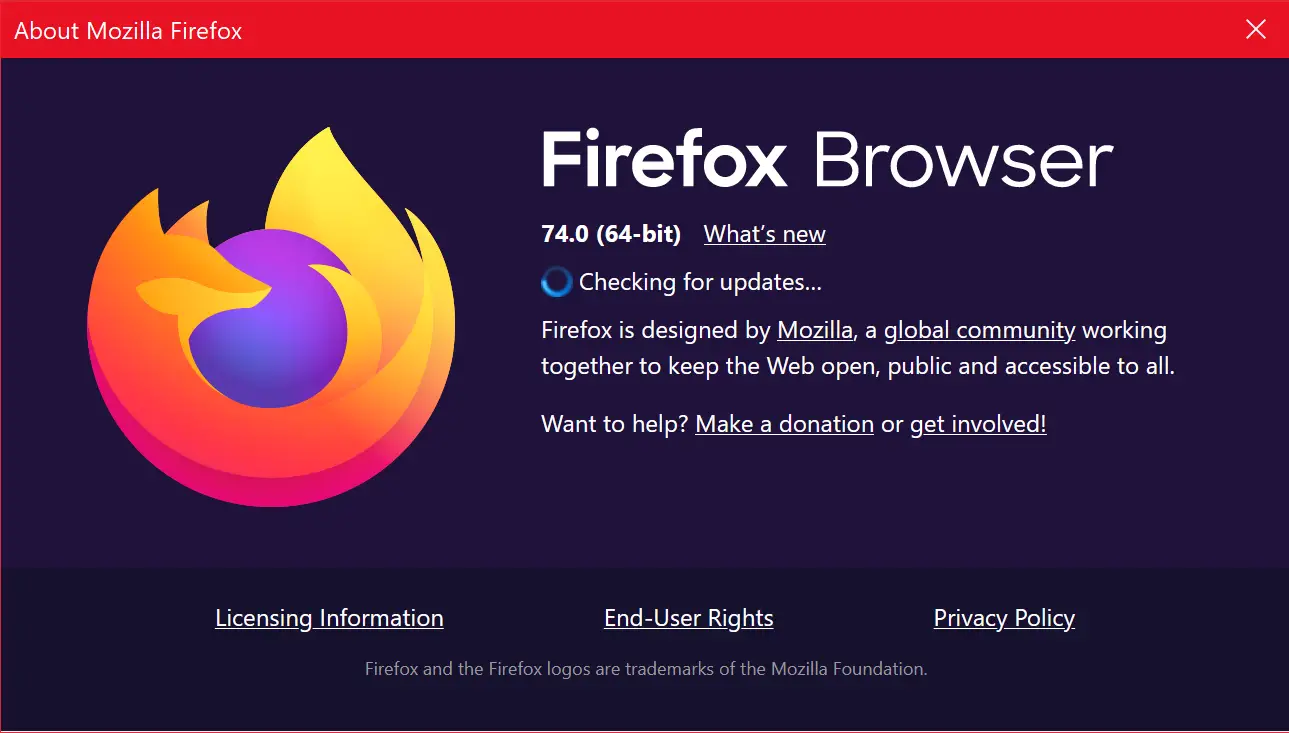
Selenium uses W3C Webdriver protocol to send requests to GeckoDriver, which translates them into a protocol named Marionette. Marionette (the next generation of FirefoxDriver) is turned on by default from Selenium 3. It acts as a proxy between W3C WebDriver-compatible clients (Eclipse, Netbeans, etc.) to interact with Gecko-based browser (Mozilla Firefox).
#Type to learn 1 firefox driver#
Gecko Driver serves as a link between your tests in Selenium and the Firefox browser. The term Gecko refers to Gecko browser engine which was developed by Mozilla Foundation as a part of Mozilla browser.
#Type to learn 1 firefox how to#
In this section, we will learn how to run your Selenium Test Scripts on Firefox Browser.īefore proceeding with this section, let us first understand the basics of Gecko Driver. This topic gives you all you need to know.Next → ← prev Selenium WebDriver- Running test on Firefox Browser- Gecko (Marionette) Driver Accessibility - make the web usable by everyoneĪccessibility is the practice of making web content available to as many people as possible regardless of disability, device, locale, or other differentiating factors. In the articles listed below, we'll cover all the essential aspects of structuring, styling, and interacting with web forms. Web forms are a potent tool for interacting with users - most commonly, they are used for collecting data from users, or allowing them to control a user interface. This topic teaches all the essentials needed to become comfortable with writing and understanding JavaScript. JavaScript is the scripting language used to add dynamic functionality to web pages. JavaScript - Dynamic client-side scripting This topic provides comprehensive coverage of CSS. CSS - Styling the webĬSS is the language that we use to control our web content's style and layout, as well as adding behavior like animation. HTML is the language that we use to structure the different parts of our content and define what their meaning or purpose is. Provides a practical introduction to web development for complete beginners. The following is a list of all the topics we cover in the MDN learning area.
#Type to learn 1 firefox code#
Solve common problems in your JavaScript code.Express Tutorial Part 7: Deploying to production.Express Tutorial Part 6: Working with forms.Express Tutorial Part 5: Displaying library data.Express Tutorial Part 4: Routes and controllers.Express Tutorial Part 3: Using a Database (with Mongoose).Express Tutorial Part 2: Creating a skeleton website.

Express Tutorial: The Local Library website.Setting up a Node development environment.Express web framework (Node.js/JavaScript).Express Web Framework (node.js/JavaScript).Django Tutorial Part 11: Deploying Django to production.Django Tutorial Part 10: Testing a Django web application.Django Tutorial Part 9: Working with forms.Django Tutorial Part 8: User authentication and permissions.Django Tutorial Part 7: Sessions framework.Django Tutorial Part 6: Generic list and detail views.Django Tutorial Part 5: Creating our home page.Django Tutorial Part 4: Django admin site.Django Tutorial Part 2: Creating a skeleton website.Django Tutorial: The Local Library website.Setting up a Django development environment.Server-side website programming first steps.Setting up your own test automation environment.Building Angular applications and further resources.Advanced Svelte: Reactivity, lifecycle, accessibility.Dynamic behavior in Svelte: working with variables and props.



 0 kommentar(er)
0 kommentar(er)
